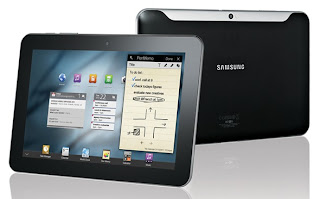 While the new super slim tablet PC from Samsung, otherwise known as the Galaxy Tab 8.9, looks great and is getting a lot of people excited, Samsung Electronics is finding itself in a little bit of a pickle with the device that was, in all fairness, a little rushed in order to compete with Apple's iPad 2.
While the new super slim tablet PC from Samsung, otherwise known as the Galaxy Tab 8.9, looks great and is getting a lot of people excited, Samsung Electronics is finding itself in a little bit of a pickle with the device that was, in all fairness, a little rushed in order to compete with Apple's iPad 2.The Galaxy Tab 8.9 was able to succeed in becoming the world's thinnest tablet coming in at 8.6mm. This was all due to the touch screen being integrated with the tempered glass known as G1F. The iPad 2 comes in at 8.8mm thick. Despite that achievement, however, Samsung is having a little difficulty putting the device out on the market due to the low process yield ratios of some key components.
This is very troubling for the company because if this problem continues, then Samsung's goal of selling 10 million units this year may be affected as well. The Galaxy Tab 8.9 incorporates both G1F and the GFF technologies. Samsung was originally planning on selecting two local panel makers and starting the new manufacturing of the Galaxy Tab 8.9 later this month. However, this yield problem popped its ugly little head up resulting in the shortage of some components.
Samsung was forced to take drastic measures and brought in two GFF panel manufacturers in addition to the ones they already had. To simplify, the new Samsung Galaxy Tab 8.9 takes two different types of touchscreens. A GFF touch panel is roughly 30% to 40% thicker than its G1F counterpart. In addition to that, the GFF's light transmittance is lower than the G1F which makes the display's overall performance poorer. According to Samsung, "There is nothing certain about the specifications of the 8.9-inch version of the product with the 10.1-inch model having yet to hit the market."
Source: Etnews - Samsung Electronics Applies Two Different Touch Screens to Galaxy Tab 8.9

No comments:
Post a Comment